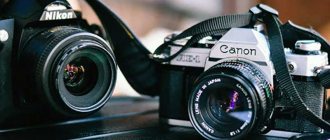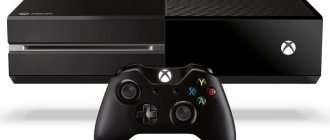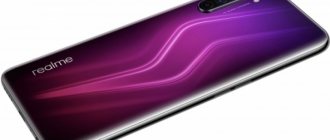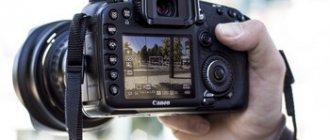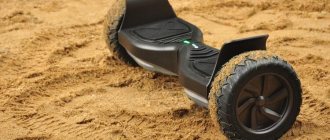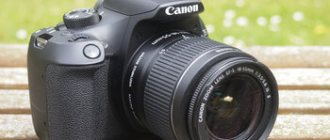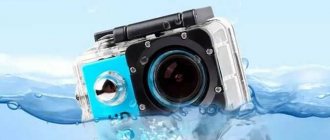DSLR cameras are a popular choice for new photographers as they offer long battery life, excellent image quality, a wide range of lenses and full manual control. They put the photographer in control of their travels and are available at a wide range of price points to suit most budgets. We've put together a detailed and useful guide to the best DSLR cameras. We'll help you decide if a DSLR is right for you, advise you on how to choose the best DSLR camera, and share a list of the best DSLR cameras currently available at various price points. We also give tips on how to get the most out of your new DSLR camera, and tips for protecting your camera while traveling.
What is a SLR camera?
The acronym DSLR stands for Digital Single Lens Reflex, which is a special type of camera that has a mirror inside the camera body and uses a digital sensor. These cameras have largely replaced the Single Lens Reflex (SLR) cameras that have been used by photographers for decades. The main difference is that film cameras use rolls of film, while DSLR cameras have a digital sensor instead.
Other than the move from film to digital for image storage, the basic technology of this type of camera hasn't changed much.
First, let's explain what a DSLR or single lens reflex camera is. The main part of a DSLR (or DSLR) camera that differs from other types of cameras such as compact cameras, mirrorless cameras or smartphone cameras is that there is a mirror inside the camera that sits inside the camera body between the lens and the camera sensor. If you remove the lens from a DSLR camera and look into the lens mount area, you will see this mirror.
This mirror captures the light coming through the camera lens and reflects it to the camera's optical viewfinder. This viewfinder is where you place your eye when you want to compose an image.
Pressing the camera's shutter button will cause the mirror to flip up and allow light to pass through the shutter curtain and onto the camera sensor. This is why the optical viewfinder goes out when you press the shutter button.
The way a DSLR camera works has a number of advantages from a photography perspective. First, when you look through an optical viewfinder, you see what the camera sees because the light you see passes through the lens. This makes focus adjustment more precise.
An optical viewfinder is also very battery efficient since you don't have to turn on the screen to see what the camera is seeing like you do with other types of cameras like mirrorless cameras or point-and-shoot cameras.
DSLRs also have a number of other notable features, some of which they share with other cameras. You can change lenses, and most of them have larger sensors than, say, a point-and-shoot camera, full manual control, and great performance.
The technology is also very well established, meaning there is a wide range of DSLR cameras to choose from at a wide range of prices, as well as a wide range of lenses to choose from.
How to choose a memory card for a camera?
Before you buy a memory card, you need to familiarize yourself with the technical characteristics of the camera and find out what type of memory is suitable for it. Information can also be found on the Internet. In addition to information about memory, you need to clarify information about the size of the flash card that your tool will “pull”.
If the question of which flash drive manufacturer to prefer is not relevant to you, then it is better not to contact companies about which you have not heard anything. Leaders in the production of memory cards are Transcend, SanDisk, Kingston.
If you are offered a free memory card when purchasing a camera, then know that this is a marketing ploy by the seller. It’s good if the card simply turns out to be defective and does not harm the device. Remember that a high-quality memory card cannot be cheap.
If you need a large amount of memory, then do not put it in one flash drive. Buy two cards with equal volume. You will protect yourself if one carrier suddenly stops working.
Before paying money to the store's cash register, check the card for serviceability. If everything works, then you can safely make a purchase.
How to choose a DSLR camera?
Until about 2012 or 2013, the DSLR was the natural choice for photographers looking to improve their photography. They offer manual controls, interchangeable lenses, and the best image quality of any camera on the market.
However, in 2012, mirrorless cameras became a popular alternative to the DSLR camera. Mirrorless cameras offer similar features to DSLR cameras, but most are smaller and lighter, making them more attractive to consumers. Size and weight are especially important for those using the camera for travel.
However, there are still many good reasons to buy a DSLR, which we'll talk about now by comparing DSLRs to other types of cameras on the market today.
Which is better, a DSLR camera or a smartphone?
A DSLR camera is very different from a smartphone. You will get much better image quality with a DSLR than a smartphone camera. With a larger sensor, interchangeable lenses, longer battery life, full manual control and RAW file support.
Of course, there are some disadvantages. A DSLR camera will be much larger and heavier than a cell phone, and it's definitely not something you can stick in your pocket or even wallet most of the time.
A DSLR will also be more difficult to use and likely more expensive. However, modern smartphones are quite expensive, and some phones now cost more than some DSLRs. However, since you probably already have a smartphone, getting a DSLR would be a good addition.
It's worth noting that the latest smartphones on the market offer a lot, but none of the smartphones with the best cameras will be on par with the best compact cameras or DSLR cameras.
So if you want to really improve your photography, a DSLR is definitely a better choice than a smartphone.
Which is better, a DSLR or a digital camera?
Digital cameras fall between smartphones and DSLR cameras. Compared to smartphones, they give you the benefit of a dedicated camera system with a larger sensor, as well as other features such as decent zoom and, in some cases, more manual control.
Compact cameras are generally easier to use than DSLR cameras and require less knowledge to master. They are also much smaller, lighter and often fit into a pocket or purse without any problems.
However, compact cameras have a number of disadvantages. They usually don't have manual controls or RAW support. Image quality is also generally not comparable to a DSLR camera. The image quality of a compact camera will usually be on par or slightly better than that of a smartphone.
Which is better, DSLR or mirrorless camera?
As mentioned earlier, mirrorless cameras are quickly becoming popular for photographers who want the benefits of a DSLR but in a lighter package.
The main difference between a mirrorless camera and a DSLR camera is that a mirrorless camera does not have a mirror image, which means that you will not find a mirrorless camera with an optical viewfinder. If there is a viewfinder, it will be electronic. Instead, you'll be able to see a digital preview of the image on the rear liquid crystal display (LCD) and/or electronic viewfinder.
This has its advantages and disadvantages. In terms of benefits, what you see on the screen of a mirrorless camera will be exactly what the image you shoot looks like, since you are looking directly at the image that is being recorded by the sensor.
With a DSLR camera, you can only see the actual captured image after you press the shutter button if you use the optical viewfinder. Although you can also use the display screen on the back of a DSLR camera for the same effect.
This advantage comes with a trade-off, as powering that screen uses a lot of energy, and mirrorless cameras have much worse battery life than comparable DSLRs. The number of shots can be significant, with a difference of 200 to 300 shots per charge for a mirrorless camera, compared to 600 to 900 for a DSLR.
Read: How does a mirrorless camera differ from a DSLR: Which one is better to choose?
DSLR cameras are also, in many cases, larger and heavier than their mirrorless counterparts. However, you must consider the weight of the lenses and spare batteries you will have to carry. So while mirrorless cameras will generally be lighter and smaller, this isn't always the case, especially when paired with lenses.
DSLR cameras are also cheaper than mirrorless cameras in many cases. The cost of new technology and the extra screen have kept mirrorless camera prices quite high, and generally a mirrorless camera will be more expensive, or at least as expensive, as a DSLR.
Finally, DSLR cameras have been around for a long time. This means there is an incredible selection of lenses available, including third party lenses like those made by Canon and Nikon, and third party lenses like those made by Tamron or Sigma.
This huge selection and huge used market means that DSLR camera lenses are often much more affordable than mirrorless camera lenses. However, a mirrorless camera will be a great choice for many, so check out our review: Best Mirrorless Cameras
How to choose a professional camera?
When choosing a professional camera, you need to study the technical documentation of models that seem attractive and compare key parameters.
These include ergonomics, image quality and functionality.
- Weight, dimensions and form factor . When choosing a camera, this is one of the most important criteria, since those who work at outdoor events need the device to be light and convenient.
- Image quality. It is mainly determined by the matrix, so the more megapixels, the better.
- Functionality . This includes the presence of all sorts of features: autofocus, flash, time-lapse, timer, video shooting, RAW shooting, night mode.
- Clarity and color rendition of pictures . These indicators are mainly determined by stabilization and photosensitivity.
- Battery capacity and number . The capacity determines how long the camera can work without recharging, and the presence of a second battery in the kit allows you to quickly replace a dead one without waiting for it to be recharged. An even more comfortable option is a battery-powered camera.
- Compatible with a variety of accessories , from memory card type to tripod or strap mounts.
How to choose the right DSLR camera
To help you out, we've put together some key features you should consider when comparing different DSLR camera models. Some of them may be necessary for you, while other features may not be so important.
Sensor size
The sensor is one of the most important parts of any camera, be it a smartphone or a DSLR. This is the component that is responsible for capturing light and turning it into a digital image file.
In the days of film cameras, the sensor was a physical piece of film that reacted chemically to the light that hit it. Modern cameras have replaced this piece of film with a digital sensor, and the size of this sensor is directly related to the camera's performance.
Generally, the larger the sensor, the better the camera will perform. This is especially true when using the camera for low-light or night photography, as the small sensor often cannot capture enough light to produce pleasing images.
Another advantage of a larger sensor is that it provides greater depth of field exposure. Of course, there is a trade-off with these larger sensors, as they require a larger camera body to accommodate them and larger lenses to capture the light. Therefore, as a rule, larger sensors come with larger, heavier and more expensive cameras.
There are two main sensor sizes found in DSLR cameras. These are APS-C and Full Frame sensors.
APS-C sensors
APS-C sensors are the most common size sensors in consumer DSLR cameras. The sensor size is not absolute, but is typically around 24mm x 16mm.
Read: Full-frame camera or crop APS-C format, what is it and which one is better to choose
If you're buying an entry-level to mid-range DSLR, it will most likely have a sensor of this size. Nikon calls this sensor size a "DX" sensor. Canon DSLRs with the EF-S lens mount system also use an APS-C sized sensor.
Full frame sensors
Full-frame sensors are the largest sensors available in DSLR cameras, with the exception of the much more expensive and bulky medium format cameras, which are beyond the scope of this article.
Full frame sensors are so called because the sensor matches the size of a piece of film, as did the original film cameras, which measured 36mm x 24mm. The result is a surface area 2.5 times larger than an APS-C sized sensor.
As you can imagine, this type of sensor is capable of capturing a lot more light, making it a great choice for low-light, action, and event photography. However, a larger sensor costs much more and also requires a larger camera body.
Number of megapixels
One popular marketing tactic that is often used to sell cameras of all types is the number of megapixels.
Megapixel refers to the number of pixels a camera captures when taking pictures and is directly related to the size of the image. For example, if an image is 5000 pixels wide and 4000 pixels high, then it will be 20 million pixels (5000 times 4000). Million is referred to as mega, so this would be a 20 megapixel or 20 megapixel image.
Megapixels are especially important if you plan to print your large photos. Higher megapixel values allow you to print photos at a larger size and provide higher quality prints.
Read: The best full-frame cameras: how to choose and which one to buy?
The reality today is that most people don't print very many photos, and they are primarily used and viewed on social media, websites, email, and as screensavers, where they will never be displayed at more than 2000 pixels. Most websites and social networks display images at 800px or less. In these cases, even a 4 megapixel image (2000px x 2000px) will do!
While megapixels matter up to a point, unless you plan to sell your photos, print them in large format, or think you'll be significantly cropping off most of your images (this is often the case with wildlife and sports photography), then you no need to worry too much about the megapixel count. Anything at 12 megapixels or higher will be good for most uses for the average photographer.
Image stabilization
In most travel photography, we hold our cameras in our hands. In most cases this is normal, however in low light images may appear blurry due to our inability to keep our hands completely still.
One option, of course, is to purchase a tripod, which is a great option for traveling anyway. If you're interested in getting a tripod, check out our guide to travel tripods.
Of course, it is not always convenient to carry a tripod, especially when traveling. Therefore, to help with this problem, camera manufacturers often implement so-called "image stabilization" into their camera technologies.
Read more: What is image stabilization?
Image stabilization, as the name suggests, is a way of compensating for slight movements of the camera in your hands when shooting at faster shutter speeds. Stabilization can't work miracles, but it can help, often allowing you to hand-hold the camera and achieve sharp results with a shutter speed of 1/8 second.
Different manufacturers use different approaches and technologies for image stabilization, with some offering it with the sensor itself stabilized inside the camera. Other camera manufacturers offer this functionality in their lenses rather than in their camera bodies.
Lens compatibility and availability
One of the best things about buying a DSLR camera is that you will have an incredible selection of lenses, both new and used. DSLRs have many more options to choose from than mirrorless cameras.
DSLR cameras have been around for a long time (late 1970s), which has given manufacturers a lot of time to develop a wide range of lenses. When it comes to the biggest names in Nikon and Canon DSLRs, it's not hard to say that there are literally hundreds of lenses to choose from for each system.
The main thing to remember when purchasing an interchangeable lens camera is that it will have a specific lens mount and you will be limited to lenses with that lens mount. For example, Canon DSLR cameras have two types of lens mounts: “EF-S” and “EF”. Most Canon consumer cameras have an "EF-S" mount, which means they accept both "EF-S" and "EF" lenses.
Read: How to choose the right lens and which one is better, tips and factors
However, their full-frame cameras, such as the Canon 6D Mark II or 5D Mark IV, come with EF mount lenses that only allow the use of EF lenses.
Features of video shooting
One of the nice things about digital sensors is that they are used not only for photography, but also for shooting video. Most can create videos, but they vary in video quality and features, such as whether they have 4K video support.
While this guide is focused on travel photography, if you're interested in video, make sure the camera you buy supports the video features you want.
Read: How to choose a lens for video shooting and which one to buy?
In terms of features, image stabilization as described above should also be considered when shooting video, as this feature can help smooth out micro-shake if you're shooting video handheld.
Battery life
DSLR cameras generally have excellent battery life.
Typically, you'll want a camera that provides 600 to 700 shots of battery life on a single charge.
Note that most photographers use an optical viewfinder when shooting with a DSLR, but if you use the rear screen frequently, it will require more power to power the screen. It's also worth noting that features like GPS or WiFi can have a significant impact on battery life, so you'll want to keep that in mind if you decide to use those features.
Model overview
The Magic Photo store helped us understand the variety of popular camera models at Shop.by.
Olympus TG-6
Among compact cameras, perhaps, it is worth paying attention to the Olympus TG-6 . Among others, it stands out favorably due to its security parameters. It is protected from water and can withstand pressure at depths of up to 15 m, and withstands falls from a height of up to 2.1 m, shock, cold down to -10°C, and dust. This camera can be submerged to a depth of up to 15 meters without additional equipment and film the underwater world. With a special box, the diving range can be increased to 45 m. A special coating prevents fogging during temperature changes. You can safely take the camera with you on trips to the tropics, desert, tundra, taiga and other natural areas. It can take bright pictures even in low light conditions. This is achieved by a lens with an aperture of F2.0, a TruePic VIII graphics processor and a 12 MP image sensor. The camera is perfect for capturing dynamic events. There is a four-fold optical zoom.
Nikon D780
A modern model that competes with mirrorless devices. It is sold without lenses; you will have to purchase them yourself, taking into account the specifics of the tasks. CMOS matrix (with anti-aliasing filter), image sensor: 35.9 x 23.9 mm, ISO 100 – 51,200, expandable to 50 – 204,800. The body itself is dust and moisture resistant. The battery capacity is 1900 mAh, it is enough for 2260 shots.
technix.by
5350 rub.
All stores (12)
Camera Nikon D780 Body
from 4900 to 8020 rub.
SLR camera, BSI CMOS matrix, full frame (36x24) mm, 24.5 MP, maximum sensitivity 51200 ISO, image format JPEG, RAW, max. video resolution 3840×2160, optical viewfinder, interchangeable lens, rotating screen, touch screen, GPS, SD, SDHC, SDXC, dustproof, waterproof, battery life 2260 shots.
Description Where to buy (12)
Olympus OM-D E-M5 Mark III
This is a good mirrorless camera. A CMOS matrix measuring 4/3 (17.3x13) mm is installed here. The number of effective pixels of the matrix is 20.4. Photosensitivity ranges from 200-25600 ISO. It is possible to change lenses here. The complex includes Olympus M.Zuiko Digital ED 12-200 mm F1: 3.5-6.3. There is an image stabilizer. Interfaces: USB; Wi-Fi (802.11 n); Bluetooth; HDMI. The battery capacity here is only 1210 mAh, which is enough for 330 shots.
Which DSLR camera is better to buy?
After taking a look at our DSLR camera reviews and taking a quick look at some of the key specs and features, we'll take a look at what we consider to be the best DSLR cameras for beginners and travel.
This list is ordered by price by manufacturer, from least expensive to most expensive, and contains what we think are some of the best DSLR cameras on the market today. For each camera, we'll talk about its strengths and why we decided to include it on the list.
Read: The best Sony cameras
We start at RUB 25,000 with a review of the cameras on this list. We think this is the lowest price you can pay for a new DSLR with a built-in lens (or about 20,000 rubles without a lens).
Until a few years ago, most kit lenses were of inferior quality, but manufacturers have improved their camera offerings somewhat in this area, and kit lenses are often a great starter lens for those looking to get into more advanced digital photography without spending huge sums of money.
How to choose a good camera?
First of all, you should proceed from your financial capabilities and the level at which you are proficient in photography. Accordingly, the higher the price of a particular model, the greater functional potential it has. But for beginners it is better to buy a simpler device.
It’s not a fact that the passion for photography will not burn out in a month or two. Therefore, the most important question before purchasing should be: why do you need a camera? For what purpose? Only after receiving objective answers can you move on to finding an answer to the main question of how to choose a camera.
A camera for an amateur will satisfy his needs with simple and, at first glance, high-quality photographs. The main thing is that they turn out clear. A professional photographer will prefer a model with the latest bells and whistles that can improve and systematize image quality.
Most cameras produced today are digital. They can be divided into two groups.
- Automatic with a minimum number of different settings.
- Mirror, the use of which requires mastery of all the subtleties of the process.
If you do not have photographic skills, you should give preference to the most automated camera. A camera with variable optics can be mastered by a professional.
But which device is better to choose? Compact digital camera or DSLR? Semi-professional or for real pros? A brief overview of camera characteristics will help you make the right choice.
The best Canon DSLR cameras
Canon EOS Rebel T7 (EOS 2000D)
Like its main competitor Nikon, Canon has a pretty amazing selection of DSLR cameras across its range. The Rebel T6 (known as the EOS 1300D in Europe) is one of their entry-level models, and you get quite a bit of camera for not a lot of money with this model.
With a 24MP sensor, WiFi connectivity and an ISO range of up to 6400, it gives you all the control you need at an affordable price. Continuous shooting speed is poor at 3fps, but it's hard to argue with the price. To be honest, we're probably leaning towards either the slightly more expensive Canon, or the lower-end Nikon if you're manufacturer agnostic.
Canon EOS Rebel SL3 (EOS 250D)
Compared to the Canon Rebel T6, the Rebel SL3 (known as the EOS 250D in Europe) has a faster processor, a higher resolution 24.2MP sensor, an articulating touchscreen, and a faster burst speed of 5fps. It also has better battery life (1070 shots). Notably, it also includes 4K video support.
If you can afford the price jump from the Rebel T6, we highly recommend the SL3 as one of the best entry-level Canon DSLRs on the market today. It's also slightly lighter and more compact than the T6, and is one of the smallest DSLRs with a moving touchscreen and 4K support on the market today.
Read: Best inexpensive Canon cameras: Which one should you buy?
Note that the SL3 replaced the EOS SL2, our previous pick on this list, in April 2021. As a result, you can expect prices to drop on the SL2, which means you can get a great deal. The SL2 has very similar specs and the same sensor, but it has a shorter battery life (around 650 shots) and n0 4K support.
Canon Rebel T7i (EOS 800D)
The T7i (EOS 800D in Europe) offers a number of features that are worth your attention.
It features a 24.2-megapixel 6fps sensor, a moving LCD touchscreen display, and Bluetooth and WiFi connectivity.
However, all that said, it's not much of an upgrade over the Nikon D5600, which offers virtually the same feature set at a lower price. The Canon does have a nicer screen and slightly faster autofocus, but the Nikon has slightly better low-light performance.
Canon EOS 80D
Now we are moving into the territory of professionals, where the cost of a camera starts at 60,000 rubles without a lens. Most will have the option to include the lens with your initial purchase.
The first camera in this segment is the Canon EOS 80D. It features a 24.2-megapixel APS-C sensor, an articulating touchscreen, fast autofocus, a sealed body, and 7fps burst shooting.
It's a very capable camera, and it's certainly a step up from the more consumer-oriented offerings in Canon's lineup, although you do start paying more for this level of camera.
Canon EOS 7D Mark II
The Canon 7D has long been the most popular camera for shooting and filming, offering many features that make it stand out in this style of photography. Specifically, it has a large number of AF points, a dedicated AF point selection joystick, a fast 10fps continuous shooting speed, and excellent subject tracking capabilities.
The LCD display is not touchscreen, but has built-in GPS and WiFi, and the battery life is rated at 670 shots. The sensor is 20MP APS-C size.
For wildlife and action photographers, this Canon camera is worth considering as it has many ideal features for quickly focusing and capturing moving subjects.
Canon EOS 6D Mark II
The Canon 6D is a great DSLR camera.
Let's start with the fact that this is the first full-frame camera on our list. The full-frame sensor is larger than the APS-C sized sensors used in all cameras so far, which means it captures more light and therefore performs better in low light conditions.
This camera also has built-in GPS, which we found essential for keeping track of where all our photos were taken, as well as a sealed body, tilting touchscreen, and a surprisingly compact and lightweight design given the large sensor. It's also an incredibly good price for a full-frame camera, and the battery is good for 1,200 shots.
It also offers a burst shooting speed of 6.5fps, which is a significant upgrade over the original 6D. ISO support is up to 102,400, and the full-frame sensor size is 26.2 MP.
Canon EOS 5D Mark IV
We are now moving towards more flagship DSLR cameras available on the market today. While there are "better" cameras that are a little more specialized, the two cameras at the top of our list from Nikon and Canon are widely regarded as work cameras for photographers of all types.
First up, Canon's contender is the EOS 5D Mark IV. As the name suggests, this is the fourth iteration of this camera model, which has long been the ultimate camera in the professional photographer's bag.
The 5D Mark IV offers a 30.4-megapixel full-frame sensor with 61 AF points, ISO support up to 102,400, 4K video support, touchscreen, weather sealing, fast autofocus, 7fps continuous shooting speed, built-in WiFi and GPS and quality Images. it ranks among the best available.
It's significantly more expensive than the 6D Mark II, which we think will suit most travel photographers, but if you want the extra features, it's a great choice.
Review of the best professional cameras
Note! The cost of a professional-level camera can vary from 60 to several hundred thousand rubles.
For this reason, we can conditionally divide all devices into mid-price and premium models.
Middle segment
Such cameras can be considered by photographers who are just starting their career and charge a modest fee for their work.
Rating of the TOP 5 best models in the mid-price segment based on customer reviews and ratings.
Nikon D780 Body
SLR camera with 25.28 MP CMOS matrix, timer, flash, 3.2-inch screen with a rotating mechanism and touch controls.
A convenient, small-sized model with excellent shooting quality, a video recording function with a resolution of 3840×2160 pixels, a shutter speed of 30 - 1/8000 s, autofocus with backlight and a timer for 2, 5, 10 and 20 seconds.
The camera has a photosensitivity of 100 - 3200 ISO and several extended ISO modes, Wi-Fi and Bluetooth wireless interfaces and a tripod mount.
Specifications:
- total number of pixels: 25.28 million;
- Max. resolution: 6048 x 4024;
- sensitivity: 100 - 3200 ISO, Auto ISO;
- shutter speed: 30 - 1/8000 s;
- Battery capacity: 1900 mAh.
Advantages
- autofocus;
- possibility of remote control;
- 2 slots for memory cards;
- user-friendly interface;
- ergonomics;
- silent shooting.
Flaws
- high cost;
- no lens included;
- no stabilization.
Canon EOS 6D Body
SLR camera with a 20.6 MP matrix, shutter speed up to 30 seconds, a 3-inch screen and the ability to record Full HD video.
A convenient and compact device with support for interchangeable lenses with a Canon EF mount, it has a matrix with a total number of pixels of 20.6 million.
It creates high-quality full-size frames with good saturation and detail, does not depend on lighting conditions and is equipped with a flash with additional functionality (for example, red-eye reduction).
The model has a timer, GPS module, 3-inch screen, several focusing modes, Wi-Fi, IRDA, video, USB, audio, HDMI and microphone input interfaces.
Specifications:
- total number of pixels: 20.6 million;
- Max. resolution: 5472 x 3648;
- sensitivity: 50 - 3200 ISO, Auto ISO;
- shutter speed: 1/180 s;
- Battery capacity: 1090 photos.
Advantages
- ergonomics;
- shoots well in any lighting;
- autonomy;
- sensitive autofocus sensor;
- build quality;
- price.
Flaws
- no rotating display;
- easily soiled display;
- There is no quick white balance button.
Nikon D610 Body
Compact SLR camera with support for full-size photos with a resolution of up to 6016 x 4016 pixels, sensitivity 100 - 6400 ISO and built-in flash up to 12 m.
With a high burst speed, fast autofocus and good photo resolution, the device allows you to take photographs in any lighting conditions.
The model has a wide dynamic range and allows you to select the appropriate ISO settings from the preset ones.
The advantage of the model is the viewfinder field of view is 100%.
Specifications:
- total number of pixels: 24.7 million;
- Max. resolution: 6016 x 4016;
- sensitivity: 100 - 6400 ISO;
- shutter speed: 1/100 s;
- Battery capacity: 900 photos.
Advantages
- metal case;
- protection from moisture;
- video recording at 60 fps;
- there is a connector for the remote control;
- high resolution photographs;
- big screen.
Flaws
- minimum shutter speed 1/4000s;
- starts to freeze when inserting a large memory card;
- oil stains the matrix.
Canon EOS 6D Mark II Body
DSLR camera with 27.1 megapixel matrix, 3-inch rotating touch screen and image stabilizer.
An ergonomic and convenient camera with a good full-frame range, Dual Pixel CMOS AF technology and time-lapse.
The model is equipped with a full-frame rotating screen, which also has an electronic level function that allows you to accurately set the horizon at night.
Electronic stabilization allows you to create spectacular video, and for ease of use of the camera, you can connect to your smartphone via Wi-Fi and control settings remotely.
Specifications:
- total number of pixels: 27.1 million;
- Max. resolution: 6240 x 4160;
- sensitivity: 100 - 3200 ISO, Auto ISO;
- shutter speed: 30 - 1/4000 s;
- Battery capacity: 1200 photos.
Advantages
- matrix cleaning function;
- electronic stabilization for video shooting;
- protection of the housing from dust;
- HDR shooting;
- tripod mount.
Flaws
- price;
- no lens included;
- one memory card slot.
Nikon D750 Body
A lightweight professional SLR camera with a wide range of settings, preset modes and a convenient flip-up screen.
An ergonomic camera with a metal and plastic body can be mounted on a tripod or connected to a smartphone via Wi-Fi for remote control.
The model has very good autofocus, optimal shutter speed, which eliminates photography noise even in poor lighting, a convenient folding screen, a capacious battery and is compatible with all Nikon F mount lenses.
Specifications:
- total number of pixels: 24.93 million;
- Max. resolution: 6016 x 4016;
- sensitivity: 50 - 3200 ISO, Auto ISO;
- shutter speed: 30 - 1/4000 s;
- Battery capacity: 1230 photos.
Advantages
- autonomy;
- there is Wi-Fi;
- well-adjustable autofocus;
- large rotating screen;
- comfortable grip.
Flaws
- no lens included;
- no viewfinder curtain;
- small buffer size.
Premium segment
Premium segment cameras are many times more expensive, have a large number of settings, modes and capabilities, so the quality of photos is almost always impeccable.
The best cameras for professional photography in terms of price and quality from the premium segment.
Pentax K-1 Mark II Body
SLR camera with a 36.77 megapixel matrix, flash, optical image stabilizer and a rotating 3.2-inch screen.
The model, which supports Pentax KA/KAF/KAF2 lenses, allows you to create frames with a resolution of 7360 x 4912 pixels thanks to a 36.77 MP CMOS matrix.
It is equipped with a matrix cleaning function, automatically adjusts white balance, has a flash, timer, time lapse, excellent autofocus and a shooting speed of 4.4 fps.
The camera can record video with a resolution of 1920×1080 pixels at 60 frames/s.
Specifications:
- total number of pixels: 36.77 million;
- Max. resolution: 7360 x 4912;
- sensitivity: 100 - 3200 ISO, Auto ISO;
- shutter speed: 30 - 1/8000 s;
- Battery capacity: 760 photos.
Advantages
- full frame;
- good dynamic range;
- reliable stabilization;
- protection of the case from dust and low temperatures;
- automatic white balance;
- two slots for memory cards.
Flaws
- no lens included;
- ergonomics;
- autonomy.
Canon EOS 1D X Mark III Body
Full frame DSLR with 5472x3648 pixel resolution, large screen, hybrid autofocus and 5496x2904 pixel video recording capability.
A camera with excellent quality photos and videos that can be supplemented with audio commentary.
The model has a reliable metal body with protection from moisture and dust, a large screen, adjustable sensitivity, accurate and fast autofocus, and automatic white balance.
The viewfinder field of view is 100%.
Specifications:
- total number of pixels: 21.4 million;
- Max. resolution: 5472 x 3648;
- sensitivity: 100 - 102400 ISO, Auto ISO;
- shutter speed: 30 - 1/8000 s;
- Battery capacity: 2850 photos.
Advantages
- autonomy;
- video quality;
- autofocus;
- time lapse;
- electronic rangefinder;
- protection from moisture and dust;
- metal case.
Flaws
- price;
- heavy;
- no lens included.
Nikon D850 Body
Professional SLR camera with 46.9 million pixels, convenient controls and a rotating touch screen.
The model features the highest image quality in full frame with a resolution of 8256 x 5504 pixels and 42-bit color depth.
Light sensitivity - 64 - 3200 ISO, Auto ISO, there is a matrix cleaning function, automatic white balance, flash with red-eye reduction, timer and 100% viewfinder field of view.
The camera is equipped with Wi-Fi, USB, Bluetooth, HDMI interfaces, a microphone input, a headphone output, and a connector for the remote control.
Specifications:
- total number of pixels: 46.9 million;
- Max. resolution: 8256 x 5504;
- sensitivity: 64 - 3200 ISO, Auto ISO;
- shutter speed: 30 - 1/8000 s;
- Battery capacity: 1840 photos.
Advantages
- autonomy;
- high resolution images;
- video recording with a resolution of 3840×2160;
- fast focusing;
- low noise at high ISO.
Flaws
- no image stabilization;
- no time lapse;
- heavy.
Canon EOS 5D Mark IV Body
A professional SLR camera with excellent color gamut, high quality photo and video recording with a wide operating ISO range.
A device with a touch screen and a large range of settings, full-size frames and an improved Live View option.
The camera can be controlled from a smartphone, and you can also view received photos on your smartphone or transfer them from device to device.
The model is equipped with excellent autofocus, which works perfectly and quickly even in the absence of any lighting.
Specifications:
- total number of pixels: 31.7 million;
- Max. resolution: 6720 x 4480;
- sensitivity: 100 - 3200 ISO, Auto ISO;
- shutter speed: 1/100 s;
- Battery capacity: 900 photos.
Advantages
- autonomy;
- protection of the housing from moisture and dust;
- GPS module;
- video quality;
- timer.
Flaws
- autonomy;
- no image stabilizer;
- demanding on optics.
Pentax K-1 Body
An easy-to-use, functional SLR camera with the ability to automatically and manually configure all the necessary parameters.
The device allows you to create clear, juicy photos with a resolution of 7360 x 4912 thanks to a CMOS matrix with 36.77 million pixels, 42-bit color depth, good, clear autofocus, timer, time-lapse mode and advanced ISO settings.
There is automatic white balance, a flash with red-eye reduction, and a backlit bayonet mount.
Specifications:
- total number of pixels: 36.77 million;
- Max. resolution: 7360 x 4912;
- sensitivity: 100 - 3200 ISO, Auto ISO;
- shutter speed: 30 - 1/8000 s;
- Battery capacity: 760 photos.
Advantages
- protection from moisture, dust, low temperatures;
- can be controlled from a smartphone;
- good autofocus;
- rotating screen;
- 100% viewfinder field of view;
- optical image stabilizer.
Flaws
- autonomy;
- no lens included;
- heavy.
The best Nikon DSLR cameras
Nikon D3500
The low price of an entry-level Nikon DSLR is certainly not an indication of quality, as the Nikon D3500 has features that made it a premium camera just a few years ago.
With a 24.2 megapixel DX sensor, 5fps and an impressive runtime from 1200 shots, the Nikon D3500 packs a punch. It also supports Bluetooth connectivity so you can connect your smartphone, and the 18-55mm lens kit has image stabilization (Nikon calls it VR). This camera is a great option for beginners.
It's also surprisingly small and light for a DSLR, although it lacks some features like a touchscreen, which is to be expected at this price point.
If you really want to save money, this camera's predecessors (D3300 and D3400) have almost the same features, but can be purchased for as little as RUB 20,000. But the D3500 has better battery life and is lighter than those cameras.
Nikon D5600
In the consumer space, Nikon has three main series - D3xxx, D5xxx and D7xxx. Prices and features rise steadily between each range, and a new model number is released every one or two years to keep the range fresh.
However, as with Canon, new release models are sometimes more of a marketing ploy than anything else, and a new model may not always be worth the price increase. The D5600 replaces the D5500, and while the upgrade isn't significant, it's about the same price, so you might as well get the latest version.
Read: The best Nikon cameras: Rating of DSLR and mirrorless models
The D5600 has a 24.2 MP sensor, a moving screen with a touch interface, good autofocus performance, Wi-Fi, NFC and Bluetooth connectivity, and a battery life of 820 shots. Of course, this is a great opportunity to review an average DSLR camera.
Nikon D7500
With a sealed body, tilting touchscreen, 51-point autofocus system, 8fps continuous shooting speed, and 4K video support, the Nikon D7500 is a serious contender at this price point.
The Nikon D7500's main competitor in this price segment is the aforementioned Canon 7D Mark 2. The Canon camera is neither touchscreen nor 4K video capable, and has a lower maximum ISO rating. However, it has a slightly faster image and a better autofocus system.
Both cameras are weather sealed, but the Nikon is significantly lighter and offers better battery life - up to 950 shots per battery.
As you can see, the Nikon D7500 and Canon 7d Mark II have their pros and cons, so ultimately it comes down to personal preference on what you prefer.
Nikon D750
It's time for Nikon's entry-level full-frame camera to compete with the 6D Mark II - the Nikon D750.
With a 24.3-megapixel FX camera (Nikon's name for full-frame images), this is a great camera. You get a tilting touchscreen, excellent low-light performance, 6.5fps burst speed, ISO up to 51,200, and built-in WiFi.
The camera is also weather sealed and can take up to 1,230 photos, along with a good autofocus system. Like the 6D Mark II, video is limited to 1080p.
Read: Review and differences between the Nikon D780 vs D750 camera
It's slightly larger than the 6D Mark II and doesn't have built-in GPS. However, both cameras are excellent, and the decision will likely come down to which camera system you're most comfortable with.
Which camera is better?
Types of cameras
Depending on the purpose and design features, the following types of cameras on the market are distinguished:
- professional —intended for use by photographers. They always include an interchangeable lens, high burst speed, thoughtful ergonomics and the ability to manually adjust. This equipment is durable and reliable, allowing for convenient reportage shooting. All professional cameras are quite expensive.
- semi-professional - combines the features of professional and amateur cameras. For example, advanced settings and a plastic case, lightweight. This is the optimal price/quality ratio. Such cameras allow you to take high-quality photographs and are much cheaper than professional models.
- amateur (or point-and-shoot camera) - has smaller dimensions and weight. Most of the important settings are set through the menu, and not directly on the case, as in professional ones. In terms of image quality under ideal conditions, many models are practically no different from professional cameras, but they lag significantly behind in speed and convenience. Many hobby cameras have a fixed lens as well as a built-in set of custom modes to make setup easier for the novice photographer.
technix.by
759 rub.
All stores (15)
Camera Canon PowerShot SX540 HS
from 759 to 1140.49 rub.
Compact camera, BSI CMOS sensor, 1/2.3″, 20.3 MP, optical Zoom (Max.) 50 x, maximum sensitivity 3200 ISO, image format JPEG, max. video resolution 1920×1080, no viewfinder, built-in screen, GPS, SDXC, SDHC, SD, battery life 205 shots.
Description Where to buy (15)
- instant camera - were previously very popular. Allows you to immediately print the photograph taken. However, the size of the pictures is quite small, the quality is mediocre, plus you need to constantly buy special photo paper. Today they serve more of an entertainment function.
Professional and semi-professional cameras are divided into DSLR and mirrorless cameras. DSLR cameras contain a special mirror that reflects the light flow passing through the lens onto the viewfinder, and when the shutter is pressed, it folds back and the light hits the focus sensors. DSLR cameras quickly catch focus and take contrasting and high-quality photographs. DSLRs can be very finely tuned, they can be precisely adjusted to any weather and light conditions, this is why professionals love them. Mirrorless cameras - light immediately hits the light-sensitive matrix. However, focusing takes longer.
technix.by
2520 rub.
All stores (19)
Camera Sony a6400 Body (ILCE-6400)
from 2460 to 3390 rub.
Mirrorless camera, CMOS matrix, 1.5 crop (24×16) mm, 24.2 MP, maximum sensitivity 102800 ISO, image format JPEG, RAW, max. video resolution 3840×2160, electronic viewfinder, interchangeable lens, rotating touch screen, SD, SDHC, SDXC, Memory Stick Micro M2, Memory Stick PRO, Memory Stick PRO Duo, Memory Stick PRO-HG Duo.
Description Where to buy (19)
The best Pentax DSLR cameras
Pentax K70
Most of these lists are dominated by Canon and Nikon cameras, simply because they tend to have the best DSLR cameras and have been leading the market for decades. However, they are not the only players in the game, and the Pentax K-70 is certainly a good contender.
Unlike other manufacturers, especially at this price point, Pentax has built-in image stabilization in their camera bodies.
It also has a vari-angle LCD screen (not a touchscreen), is fully weather sealed (a feature not usually found on entry level cameras!), has a 24.2 megapixel APS-C sensor and an ISO that goes up to 102,400 ,
It's a great contender, with some great features at this price point. Just remember that Pentax doesn't have the huge range of lenses available for Canon and Nikon systems.
Pentax KP
As mentioned earlier, Canon and Nikon are the two big players in the DSLR camera space that tend to dominate best-of lists, but Pentax has some great inexpensive and competitive options, including the Pentax KP.
The Pentax KP is an excellent choice for a DSLR, offering in-body image stabilization, a 24-megapixel sensor, a tilting LCD screen (not a touchscreen), 7fps burst shooting, and a very high maximum ISO of 819,200. He also received a completely sealed body.
Battery life isn't ideal at less than 400 shots, and it's relatively heavy, but it gets a lot of positive feedback for its strong build quality and excellent image quality, especially when shooting at higher ISOs.
If you're not committed to buying Canon or Nikon and are happy with the range of lenses available, this is certainly an option worth considering.
Nikon D7500
With a sealed body, tilting touchscreen, 51-point autofocus system, 8fps continuous shooting speed, and 4K video support, the Nikon D7500 is a serious contender at this price point.
The Nikon D7500's main competitor in this price segment is the aforementioned Canon 7D Mark 2. The Canon camera is neither touchscreen nor 4K video capable, and has a lower maximum ISO rating. However, it has a slightly faster image and a better autofocus system.
Both cameras are weather sealed, but the Nikon is significantly lighter and offers better battery life - up to 950 shots per battery.
As you can see, the Nikon D7500 and Canon 7d Mark II have their pros and cons, so ultimately it comes down to personal preference on what you prefer.
Nikon D850
A Nikon-level professional camera with a huge 45.7MP sensor, 9fps continuous shooting speed, high-resolution tilting touchscreen, 153 AF points, weather sealing and 4k video support supports a variety of tasks.
Its sensor in particular has been praised as one of the best on the market, offering wide dynamic range and excellent low-light performance.
There's no built-in GPS, and it's a bit heavier (and more expensive) than the Canon 5D Mark IV. The D850 may have a slight edge over the Canon 5D, but it's also a bit more expensive. Both are excellent professional-grade camera choices.
How to choose a tripod for a camera?
Most camera owners dream of purchasing a tripod to go along with it, the function of which is to hold the camera in a stationary position. But how to choose a compact and at the same time reliable tripod? To do this, you need to know the basic characteristics of the device.
- Working height is defined as the distance from the surface of the platform with which the tripod is in contact to the camera. The height can be minimum and maximum. It is better if the maximum height is greater than the height of the photographer.
- Tripod size and weight . These indicators must be such that when shooting, the weight of the camera does not affect the support and does not break it. However, you should give preference to compact tripod models, since they are more convenient to carry in your hands.
- Accessories . Many tripods come with a full set of components. But professionals prefer to buy various elements separately. This is a more expensive purchase option, but also of higher quality.
- The case will come in handy on a long journey or while traveling. It will protect your tripod from bad weather.
The best digital cameras of 2021
10. Canon PowerShot G1 Mark II
This is a fairly compact model with high performance, perfect for both beginners and experienced photographers. In terms of its overall dimensions, this model is slightly inferior to SLR cameras; its processor has a high clock frequency, which ensures high performance of the device. First of all, it is worth noting that this model is characterized by a matrix of significant size, and it also has a sensor with a diagonal of one and a half inches. The number of megapixels is not too large, however, as we have already found out, this parameter is not key.
The lens is non-replaceable, has a high aperture ratio and five-fold magnification. The focal length ranges from 24 to 120 mm. The lens has an optical stabilizer, which makes this camera perfect for shooting in low light conditions. The body is made of magnesium alloys and fits nicely in the hand. It is waterproof, so you can even shoot underwater. The design has a Wi-Fi module.
Advantages:
- Compact dimensions;
- Excellent build quality;
- The clarity of the resulting images;
- Shockproof housing.
Flaws:
- One battery charge is enough for approximately 300-400 shots;
- High price.
Canon PowerShot G1 Mark II
Fujifilm X30
A very convenient digital camera, stylized as a classic film model. It has a fairly capacious battery, which is enough for about 500 shots; it is recharged using a USB cable. Charging can be done in the device itself; there is no need to remove the battery, which is very convenient when traveling. There are as many as 12 shooting modes, with both manual and automatic settings provided. On the body there is a special slot for installing an external flash. On the back panel, almost all the space is taken up by the touch screen. It is retractable and equipped with a tilting mechanism, which allows you to shoot with your arms outstretched, and the photographer will have a clear view of everything that happens on the display.
More: Top 10 column fans
As with most other models, there is a built-in Wi-Fi module that allows you to connect with other digital equipment such as smartphones, computers or laptops. The viewfinder here is electronic, which greatly facilitates the operation of the device. There is a special button for video recording, and there is a jack for connecting a remote control or an external microphone.
Advantages:
- Good detail of the pictures;
- High-quality assembly;
- High shooting speed.
Flaws:
- In automatic modes, the white balance is disturbed;
- Moving objects in semi-darkness or twilight cannot be clearly captured even with a high-quality flash.
Fujifilm X30
8. Panasonic Lumix DMC-LX 100
The body of the device is made of aluminum alloys, so you need to be careful with the camera, it is sensitive to falls. The overall dimensions are not too large - this model will fit perfectly even in one hand. The build quality is excellent even though the product is made in China. There are no backlashes on the body and no extraneous squeaks occur even after several years of operation. There is a lamp on the front of the body that illuminates the automatic focus, and there are levers on the lens that are responsible for selecting focus and the aspect ratio of the frame. On the back of the device there is a large display, above it there is a digital viewfinder, near it there is a proximity sensor and diopter adjustment. To the right of the display there are buttons for viewing and menu settings.
At the bottom of the case there are compartments for installing a battery and memory card, connectors for a tripod and a small speaker. On the right end side there is a plastic plug, under which there is a connector for connecting USB and HDMI cables. The focal length range is from 24 to 75 mm, the matrix is large, and the depth of field due to this combination is simply excellent. In low light, very clear images are obtained. In video mode, it can produce up to 11 frames per second, recording is done in 4K or Full HD format.
Advantages:
- High picture quality when shooting video;
- A large number of individual settings;
- An excellent stabilizer.
Flaws:
- Poor focusing in manual format;
- The housing is not protected from dust penetration.
Panasonic Lumix DMC-LX 100
Leica Q (Typ 116)
This model is equipped with a full-frame matrix with a resolution of 24 Megapixels. There is an automatic mode that selects the most suitable shooting modes for existing lighting conditions, and it can be turned off and all settings can be made manually using the shutter speed dial and two rings - aperture and focus. The model is also equipped with several more buttons and a four-button joystick for more convenient menu navigation. The camera turns on very quickly - it takes less than a second, so you can quickly get an interesting shot. Auto focus is also quite fast, and the same applies to focusing in manual mode.
The lens has excellent color reproduction and good sharpness; the picture looks quite decent, largely thanks to special software correction of all parameters. The product shoots in various formats - their choice depends on how these images will be used in the future: one mode is provided for software processing, and another for ordinary viewing and printing. The display on the back of the camera has excellent color reproduction. The electronic viewfinder has high resolution.
Advantages:
- Very high image quality;
- Comfortable ergonomic shape, fits easily in the hand;
- Excellent stabilizer;
- All automatic settings can be adjusted manually.
Flaws:
- Weak battery;
- Sometimes it's difficult to set up a Wi-Fi connection;
- Auto focus works worse than on DSLR cameras.
Leica Q (Typ 116)
6. Canon PowerShot SX410 IS
One of the most compact models in our ranking of the best digital cameras. The aperture is in the range from 3.5 to 6.3 - this parameter will be quite enough for shooting in the dark; the optical zoom can reach 40x magnification. Focal length variable 4.3-172 m. The lens is closed with a spring-loaded cap. On the bottom side there is a socket for mounting the device on a tripod. All main functional buttons are located on the upper right part of the case. On the button responsible for releasing the shutter there is a ring responsible for magnification. There is a small microphone at the back above the large display. All main connectors are covered with a rubberized lid.
More: Top 10 best smartphones for children, how to choose a children's smartphone
In economy mode, the battery is enough for 250 photos, in normal mode – for 185 frames, there is a slot for installing a memory card, since the camera does not have its own internal memory. The display resolution is not too high, only 230 thousand pixels, the lens shutter speed is adjustable from 15 to 1/4000 seconds. The camera has small overall dimensions and fits comfortably in your hand.
Advantages:
- Excellent photo and video quality;
- Convenient 40x zoom.
Flaws:
- Low battery capacity;
- Non-standard shape - difficult to find a case;
- The plastic case is sensitive to physical influences.
Canon PowerShot SX410 IS
5.Canon Digital IXUS 220HS
Another fairly compact model, which, despite its modest size, is distinguished by high performance characteristics - a 12-pixel matrix with back illumination, a wide-angle lens, which is usually not found in such compact devices. In addition, there is optical image stabilization, and there is a 2.6-inch display on the rear panel. Continuous shooting is identical in performance to the best SLR cameras. Video shooting is done in Full HD format, sound is recorded in stereo format, there is an HDMI connector.
Back illumination of the matrix allows you to increase the amount of light entering it. When you select continuous shooting, 3.4 frames are taken per second. The quality of the images is excellent, largely due to the good color rendition of the lens. The model is housed in a plastic case, so you should handle this camera with care: it is sensitive to falls.
Advantages:
- Small overall dimensions;
- Durable model;
- Preparation for shooting takes a minimum of time;
- Japanese assembly, which in itself guarantees its quality.
Flaws:
- Plastic body;
- The duration of one video file does not exceed 10 minutes.
Canon Digital IXUS 220HS
Nikon Coolpix P900
This model is perfect for photographing wildlife, including in macro mode. The camera is equipped with an 83x optical zoom, allowing you to capture even small details that are invisible to the naked human eye. The product turns on almost instantly - it takes less than 0.5 seconds. The design includes an optical vibration reduction system made using the latest Dual DetectOptical VR technology, which completely eliminates blurring.
The design includes a built-in electronic viewfinder and a variable-angle display. Due to these elements, the user has excellent opportunities in terms of frame composition when shooting video. In addition, there are a number of built-in modules - GLONASS, QZSS and GPS, which allows you to obtain the most accurate data about the shooting location. There is a standard Wi-Fi module, thanks to which you can instantly share the resulting photos with other users. The display is liquid crystal, has a diagonal of 7.5 cm. The design includes a convenient microphone that allows you to get clear and high-quality sound. The battery has an increased battery life.
Advantages:
- 83x zoom;
- Support for stereo sound when recording video;
- Availability of many additional modules.
Flaws:
- Not touch screen;
- When performing continuous shooting, the memory buffer is small;
- Large dimensions for a compact device.
Nikon Coolpix P900
3. Sony Cyber-shot DSC-TX30
This is one of the best digital cameras housed in a waterproof body. It is highly durable, resistant to dust and low temperatures. Such a device will be an excellent solution for those who prefer active recreation. The body is metal, the main control of the camera is carried out via a touch display located on the back of the device. There are several standard buttons, they are responsible only for the most basic functions - switching to video recording mode, turning on or off, and so on. On the end parts of the product there are connectors for connecting a USB cable and memory card. Together with the battery, the product weighs only 140 grams.
More: Top 10 best winter boots, choosing winter shoes for hunting and fishing
Operating the device with gloves is not very convenient, since the sensor will not immediately respond to touch. You should be careful with the display, as if worn without a case, it will develop scratches after a few weeks. The matrix is designed for 18.2 megapixels, due to which it is possible to achieve excellent color rendition. The camera does not behave very well in low light conditions, but it can be immersed in water to a depth of 10 meters, and it is not afraid of falling from a height of up to one and a half meters. There is an LED lamp that allows for improved macro photography quality. The model turned out to be productive: it takes less than one second to prepare for use, and focusing in automatic mode also works very quickly.
Advantages:
- Compact overall dimensions;
- High quality shooting in any mode;
- Availability of a touch display;
- Waterproof housing.
Flaws:
- There are no Wi-Fi and GPS modules;
- Weak battery;
- The screen is prone to damage.
Sony Cyber-shot DSC-TX30
Leica XU (Typ 113)
The model belongs to protected cameras that perfectly withstand exposure to low temperatures, falls from heights, and immersion in water, although this in no way affected the appearance of this device. The matrix has a resolution of 16.5 megapixels, the focal length is 23 mm. Light sensitivity can be adjusted if necessary, the same applies to the shutter speed - the maximum setting is 1/2000 of a second. In burst mode, the camera produces 5 frames per second. On the back there is a three-inch diagonal LCD screen with a resolution of 920 thousand dots. SD memory cards are used to store images and videos.
The battery is quite capacious - one full charge will be enough for 450 shots. The camera turned out to be heavy - 635 grams, so holding it with one hand will be very uncomfortable. The lens is not sensitive to glare, color rendition is accurate, the same can be said about the detail of frames, even when there is a lack of natural light.
Advantages:
- Excellent build quality, like other cameras of this brand;
- Good lens, insensitive to glare;
- Convenient controls that even a novice photographer can understand;
- It is possible to record video in Full HD format.
Flaws:
- You won’t be able to customize the controls;
- Buffer memory is small;
- High price.
Leica XU (Typ 113)
Nikon Coolpix AW 130
This model has become a leader in our review of the best digital cameras due to a number of useful functions and additional features. It has all the necessary built-in modules, separate buttons to control them, as well as a water- and dust-proof case that allows you to immerse the device in water to a depth of 30 meters. There is a convenient bulge on the right side of the camera for one-handed grip. The lens is framed with a special hood that will protect it if the camera falls. There is an NFC module, thanks to which the camera will quickly connect with any other device.
The camera allows you to take beautiful pictures both in bright light and in low light, and in the latter case it is possible to photograph the subject with excellent detail. You can get sharper shots, but this will negatively affect color reproduction. The camera has an excellent price-quality ratio, which largely determined its leadership in our review.
Advantages:
- Reasonable cost;
- High build quality;
- Stunning images with natural color reproduction.
Flaws:
- The latches are too tight.
Nikon Coolpix AW 130

